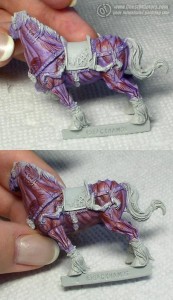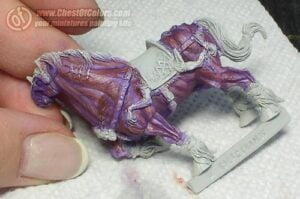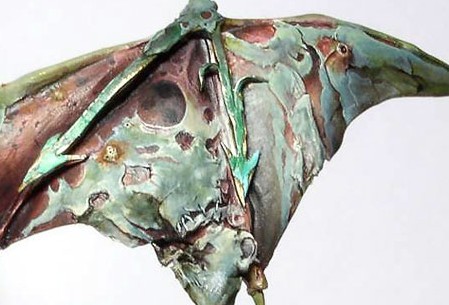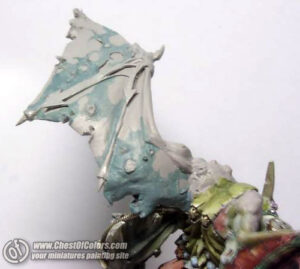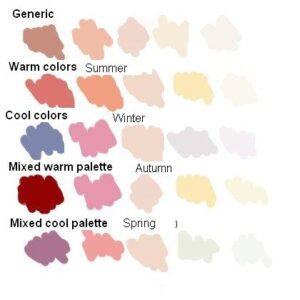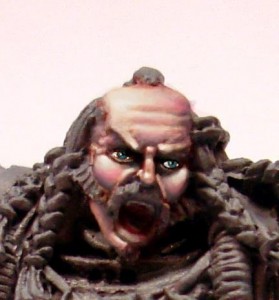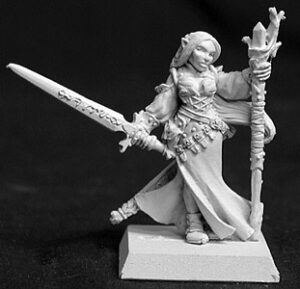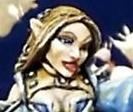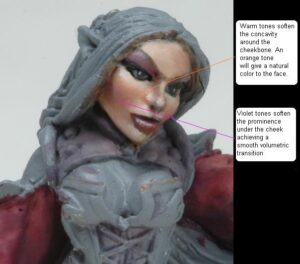I was asked to write a tutorial about how I painted skin on my drunes.So here is few words about my way of painting skin on example of Muldo, Hammer-Brute from Mierce Miniatures. This is quite large figure – 65 mm to the eyes (which are not visible, but still 😉 ) so there is a lot od space to show my technique. I paint drune skin here, but the same principles apply to painting human skin in general.
Here is the mini airbrushed with basic skin color.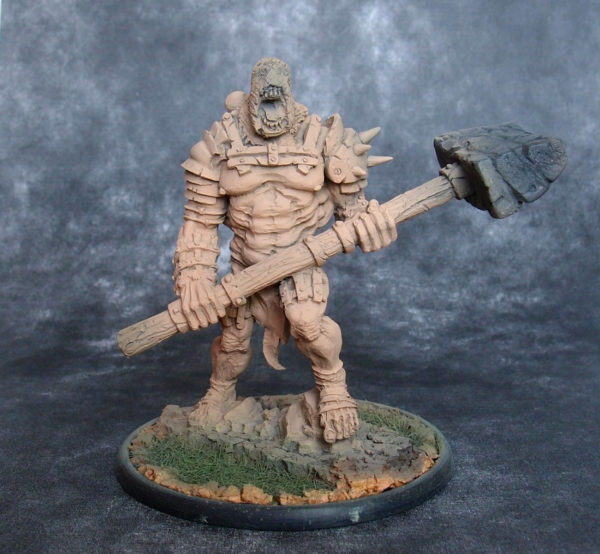

If it was smaller or did not have so much bare skin, I would apply basic skin color with a brush. My basic skin color is Citadel Elf Flesh. Most of available flesh colors (including this one) are in my opinion too orange, so I always add a little of light blue (Vallejo Glacier Blue here). In case of elves or females I add more blue (up to 40% of the skin mix), in case of males, especially barbarians or drunes less (about 20-25%).
Since I airbrushed the mini, I added a little white to the last layer and sprayed the mini from the top to build basic highlights that would help me in painting. All the next steps are made with a brush.
In the next step I apply shadows. My primary color for shadows is 50% mix of Vallejo Royal Purple and Vallejo Cavalry Brown. I gradually add it to the base skin color mix. Here you can see my basic skin color (on the left) and shadows color (on the right). What is between is a mix of those two. The shadow color is really strong (it changes a lot the base skin mix, which is quite light) so I add a very little of it to the first shadow layers.
The 2 keywords for painting skin (or any other miniature painting) are DILUTION and GRADUALLY. I want to make all the color transitions smooth, so I dilute tha paint for shading (and highlighting also) and I gradually add shadow color to the mix for each layer. How many layers do I make? Usually 4-5 are enough. In the end I add a little black to the pure shadow mix and paint darklines along borders of skin areas (in this case near armor plates or pieces of fabric). Below there is how the mini looks after shading. There was no highlighting yet and the muscles on the figure are already nicely emphasized.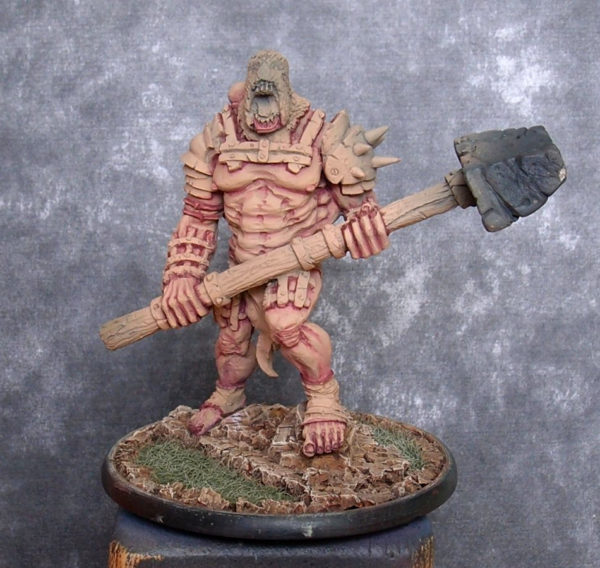

As you can see I also painted the base. Generally I always paint the base first (if I airbrush the miniature, than in the second step). I use rather simple techniques to the base (mostly wash and drybrush) so I want to do this in the beginning not to spoil paintjob of the mini itself by accidentally messing it up withe the base color.
After shading comes time for highlighting. Again I start from my base skin color mix and I gradually add white (Citadel White Scar in this case). Proper dilution of the layers is also important here. Below you can see basic skin color on the left gradually mixed with white towards the right. Of course further highlighting is possible. The most “prominent” parts like knuckles or tip of the nose are painted in almost pure white. I like to achieve high contrast between shadows and highlights. Again I usually apply about 4-5 highlight layers.
The brute’s body is quite harsh and full of muscles, so there are many spots of shadows and highlights. Here is how it looks after applying highlights:

I hope that now the contrast is appropriate and the mini does not look boring. I could paint more layers and “polish” the miniature more, but I think this is enough. It took me about 5 hours to paint the mini to this stage and as I have limited time for painting – I don’t want to spend more on a single figure. I prefer to paint 3 miniatures to a good standard than 1 mini to a better one. It’s all the matter of compromise between available time and the paintjob quality.
As soon as I paint the remaining parts of the miniature, I will show the final results in the next post.
Edit: HERE is the link do the photos of finished miniature.
Any tutorial is useless until you try to practise it yourself. Don’t be affraid to experiment and find the technique that is the best for your uses.
If you want me to explain something or have any suggestions for future tutorials, please write it in comments section.
Cheers!
Your miniatures have stories to tell.
Let us help them speak.
Get in touch today and let’s give them the colors they deserve.




